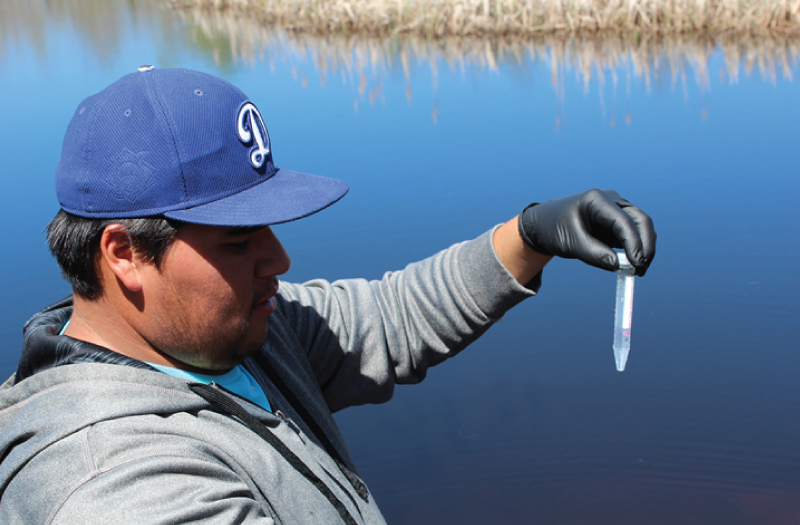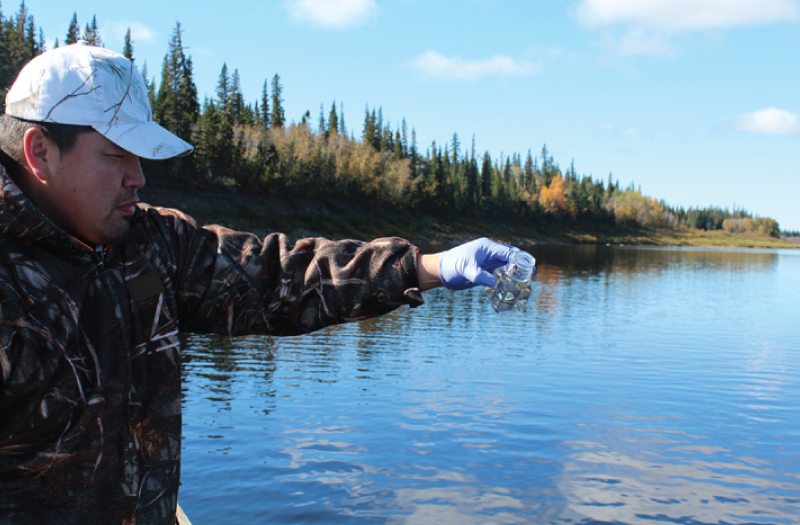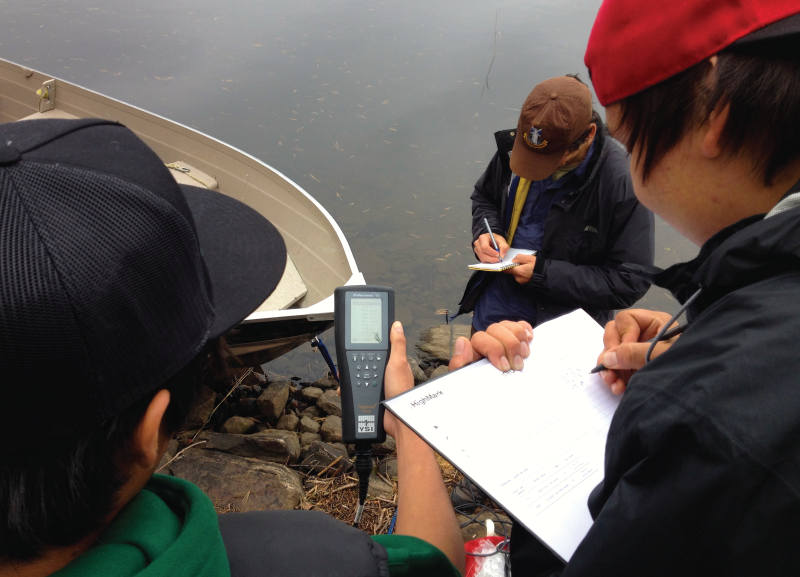Charity Spotlight: This blog post is part of our charity spotlight series and was provided by John D. Millar, Executive Director and Founder of Water First.
Russell Jones had recently graduated high school when he was hired to fill a water sampling job at Water First. He’d never done water sampling before, but his home reserve of Shawanaga First Nation, located just north of Parry Sound, had run out of water, and the community was searching for answers.

Shawanaga First Nation was drawing its water from a well, which had run dry. The community drilled more wells, trying to fill the need, but the new wells turned up dry too. There was only one option: Shawanaga First Nation needed to draw surface water from nearby lakes and rivers, but they’d require a new water treatment plant to make it happen. After all, every drop needed to be clean and safe for consumption.
Faced with this challenge, the need was clear: to provide members of Shawanaga First Nation with clean drinking water, the community’s cleanest surface water needed to be located. To accomplish this, Water First partnered with Carleton University hydrologist Murray Richardson, and opted to hire and train two young adults locally, instead of employing outside experts to conduct the sampling.
Russell Jones and River Pamajewon, two young men from Shawanaga First Nation, learned the required skills and trudged through the woods every week for six months sampling water at various sites for their community. It was their hard work that determined the best water source to fulfill this plan, and through that, Water First noticed another important result.
Despite the challenging work, Russell decided to pursue water science as a career and still works in the field today as a hydrogeological assistant. Following Water First’s next water training project with Temagami First Nation, another trainee applied to become a water treatment plant operator. Water First saw first hand that hiring and training local community members brought important skills and employment experiences to communities, which would remain long after a project is complete. It was these early training experiences with First Nations youth that laid the foundation for Water First’s future programs in other First Nations communities.
“Working with Water First has been outstanding! I’ve learned a lot about the process of sampling water. I truly believe that my experiences as a research assistant will benefit me in getting a similar job working with water, and I feel that we made a big impact on the solution to Shawanaga’s water problems.”—River Pamajewon, Shawanaga First Nation
Why Train?
The Government of Canada is responsible for water infrastructure in First Nations communities, and virtually all First Nations had a functioning water treatment plant at one point in time, but training regarding the operations and maintenance of water treatment plants was lacking; it was often up to individual communities to address. Yet, technology alone does not provide clean drinking water—the people behind it, at the local level, are critical.
First Nations peoples are significantly underrepresented in the sciences, and water science is no exception. Take Ontario, for example, where a third of First Nations communities lack a certified water treatment plant operator, and four out of ten First Nations are under a boil water advisory.

There are many benefits to local training programs, including significant cost savings for government in the long run, by helping to avoid replacing derelict water treatment plants. It’s cheaper to run training programs regarding water treatment plant operations and maintenance, than it is to replace multimillion-dollar infrastructure. Local training also offers sustainability, because at the end of a project, the skills are retained by the community, which facilitates long-term independent water resource management.
Our Challenge Remains
Although boil water advisories in First Nations communities in Canada are widespread, Water First has discovered that we occupy an uncrowded space among other Canadian charities. On more than one occasion, Water First has been the only Canadian charity, or one of just a few, present at national, provincial, and regional conferences related to First Nations water challenges. This is in stark contrast to other gatherings attended, with an emphasis on drinking water challenges abroad, where Canadian NGOs have a rich and vibrant presence.

Water First’s programs experience very high levels of community uptake, and the political will to address this issue is currently strong, yet government funding programs directly supporting First Nations water training programs, which charities can apply to, are non-existent. It takes time for public opinion and political will to translate into targeted government action. In the meantime, our work driven by donations provides First Nations youth and young adults with the ability to gain critical skills to facilitate long-term change, community independence, and safe drinking water for First Nations communities long into the future.
To learn more about Water First, or to make a donation, please visit their Charity Profile Page.
Leave a Reply